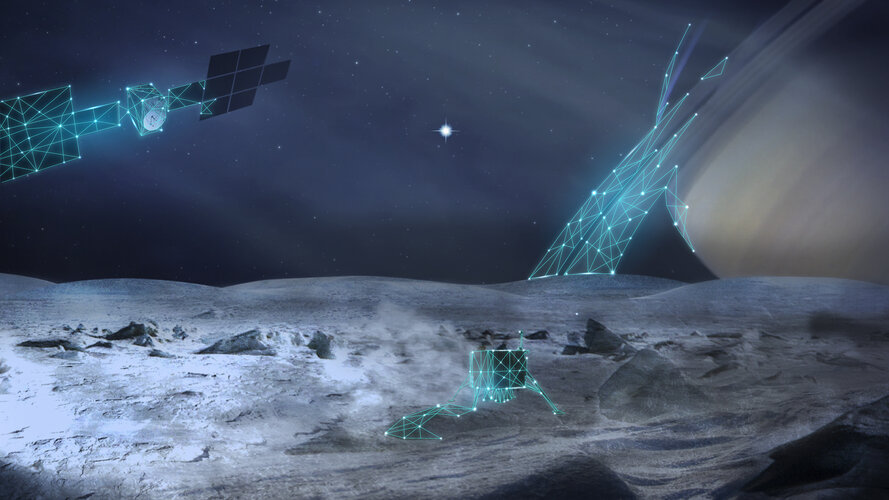Standing on the shoulders of giants
Building upon ESA’s Jupiter Icy Moons Explorer (Juice) and the NASA/ESA/ASI Cassini-Huygens mission to visit Saturn and land on Titan, this new mission would carry next-generation instrumentation capable of revealing unimaginable secrets of an ocean world such as Enceladus. ESA could launch such a mission in the early 2040s with Ariane 6, arriving at its destination around a decade later. In the style of Juice and Cassini-Huygens, the mission – if targeted towards Enceladus or Titan – could perform a fantastic tour in the Saturn system, encompassing flybys of other puzzling moons, before a grand-finale close-up investigation of the chosen target.
To significantly advance European ambitions in planetary science, the team judged that the new mission must collect a sample of the ocean world, either using a lander or by flying close to the surface to sweep up material ejected by plumes. A mission to Enceladus would touch down at the moon’s thinly crusted south pole to collect ejected ocean material, whereas a mission to Titan should focus on lake sediments. In either case, an onboard laboratory equipped with miniaturised and highly sensitive instruments would unravel the biochemical secrets of the collected material.
Like Juice and Cassini-Huygens, our mission to the ‘moons of the giant Solar System planets’ will engage Europe’s foremost engineering and industrial capabilities to cope with enormous challenges, including limited solar energy, wildly varying temperatures and communication over huge distances. ESA is already overcoming similar challenges with Juice.
The new mission will boost European competences in many scientific and technological fields, including in-orbit assembly, operating in extreme environments, landing technologies, and novel scientific instrumentation. All these revolutionary technologies will have a wide range of applications, well beyond ESA’s space science programme.



